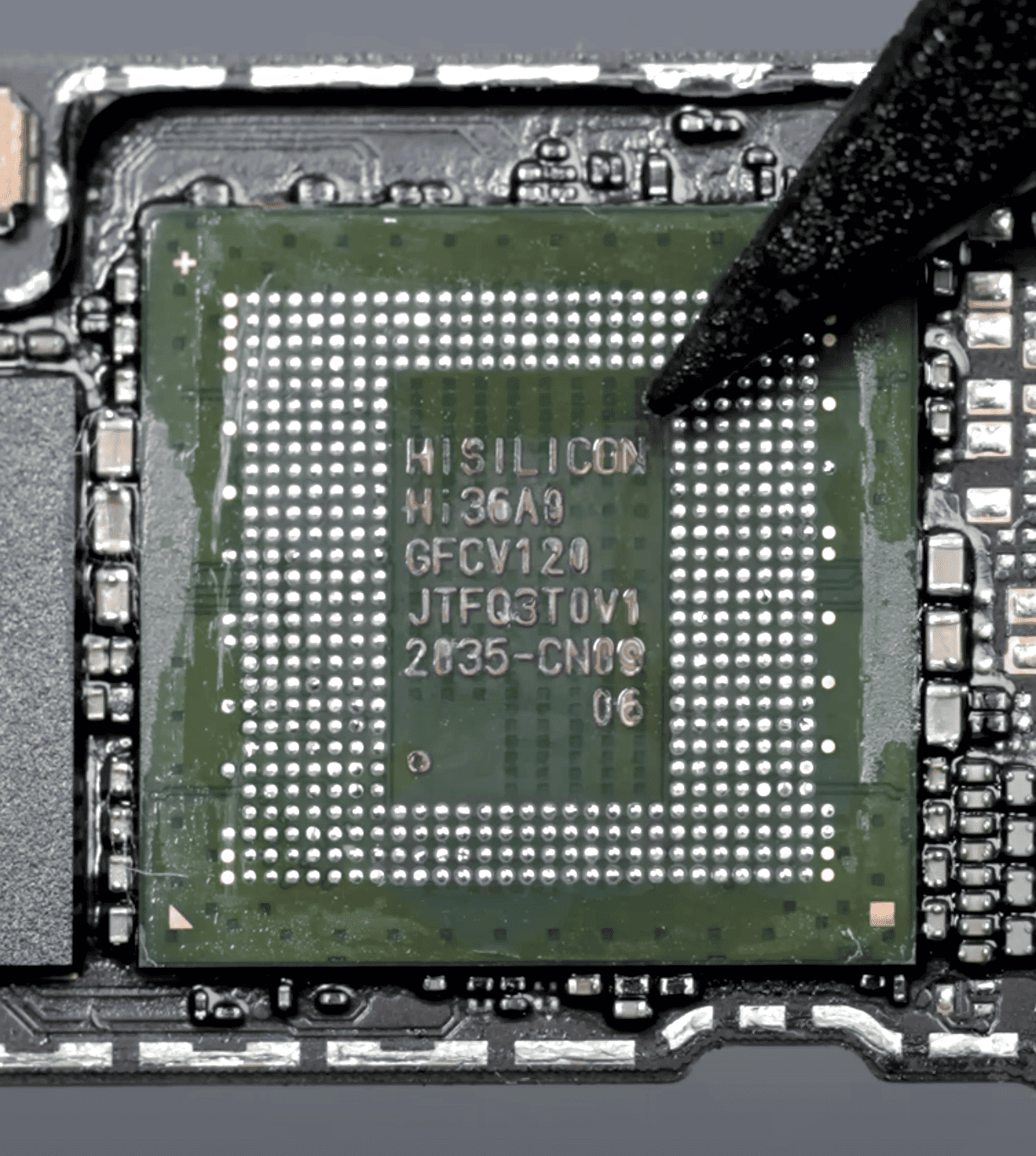
When Huawei unveiled its new flagship smartphone earlier this month, Chinese consumers discovered a device that went far beyond expectations of what the sanctioned phone maker could achieve technologically. What American officials discovered, on the other hand, was a headache.

Since 2019, the U.S. has sought to undermine China’s advances in several high-tech sectors via a litany of restrictions. Sanctions imposed in May that year were supposed to stop Huawei from accessing chips capable of 5G connectivity; while sweeping export controls announced last October 7th were designed to prevent Chinese chipmakers like Semiconductor Manufacturing International Corp. (SMIC) from getting key equipment needed to fabricate cutting-edge chips.
But the arrival of Huawei’s new phone, called the Mate 60, has challenged assumptions about China’s capabilities in the face of multilateral export controls. Analysis by Canadian research firm TechInsights shows that the Mate 60 is 5G-enabled and uses an advanced 7-nanometer chip made by SMIC. By comparison, the world’s most advanced chips currently contain ‘process nodes’ around 3 nanometers in size.
To some, Huawei and SMIC’s breakthroughs suggest the U.S. government has failed to enforce its restrictive measures. While no evidence has emerged proving that SMIC has violated American sanctions, experts say it would be difficult to produce cutting-edge chips without U.S. technology or inputs. In a letter last week, ten Republican lawmakers urged the Commerce Department to crack down on approving licenses to firms supplying Huawei and SMIC, and to investigate whether they had violated sanctions.
“We are extremely troubled and perplexed about the Bureau of Industry and Security’s (BIS) inability to effectively write and enforce export control rules against violators, especially China,” the lawmakers wrote, referring to the responsible Commerce Dept. agency. “BIS has continued to grant licenses to Chinese Communist Party (CCP) controlled companies, such as SMIC, worth hundreds of billions of dollars.”

Under Secretary of commerce for industry and security, regarding SMIC and Huawei.
In March, the House Foreign Affairs Committee disclosed that Commerce had approved 192 licenses worth over $23 billion to export U.S. technology to blacklisted Chinese companies in the first quarter of 2022. An earlier disclosure by the committee in October 2021 showed that SMIC received close to $42 billion in U.S. goods between November 2020 and April 2021, and was approved to receive exports in 91 percent of cases.
“The language in the U.S. government’s various documents is very clear about what their goal is. They just need to enforce it.” says Dylan Patel, chief analyst at SemiAnalysis, a semiconductor research firm and consultancy.
Patel says companies like SMIC may have been able to manufacture 7nm chips by repurposing imported chip making equipment licensed for manufacturing older, legacy chips. In turn, that suggests the U.S. and its allies may have set the threshold for export controls too low, particularly regarding deep ultraviolet (DUV) lithography machines — sophisticated equipment that is vital to the chip making process, and where one Dutch firm, ASML, currently has a monopoly. “The lithography restrictions target certain tools, but not the ones that other chipmakers such as TSMC and Intel have [been able to] use to produce seven nanometer [chips],” he says.
The October 7th rule is almost built to make things worse [for China’s chipmakers] over time. This technology is going to age, and what China has in its borders is going to age.
Emily Weinstein, a research fellow at Georgetown’s Center for Security and Emerging Technology
Some experts argue that China’s ability to produce an advanced chip does not necessarily mean the export controls have been a failure.
“Do we define [the goal of export controls] as stopping China from indigenously developing these technologies?” asks Sarah Bauerle Danzman, associate professor of international studies at Indiana University. “I would say that it’s never the case that we can do that. The purpose of export controls is to prevent particular technologies you happen to have a monopoly over from going to a particular adversary, or to increase the cost to an adversary.”
In a report published this week, Bauerle Danzman examined the cross border trade of seven components in the semiconductor supply chain since 2017 and calculated the importance of different suppliers and buyers. “One thing that we did see is a sharp decline in China’s centrality as a buyer of several of these components after the imposition of the controls,” she says.
The financial impact of export controls on China is hard to gauge. SMIC last year received $270 million in government subsidies, the highest sum of any Chinese chipmaker. Still, that was nearly a fifth lower than the level of subsidy it received in the previous two years, suggesting that the controls are hitting Beijing’s wallet less than expected.
Others argue China has not yet felt the full effect of export controls. “The October 7th rule is almost built to make things worse [for China’s chipmakers] over time,” says Emily Weinstein, a research fellow at Georgetown’s Center for Security and Emerging Technology. “This technology is going to age, and what China has in its borders is going to age.”
For example, if SMIC wants to develop more advanced chips it will almost certainly require ASML’s extreme ultraviolet (EUV) lithography tools, which are tightly export controlled. According to Weinstein, that means “right now, China is the most advanced and the closest to us it’s going to get.”

Industry watchers expect the Commerce Department to soon release updated rules that could include additional controls on China’s access to AI computing — making it harder for Chinese entities to buy advanced graphics processors like Nvidia’s H800 and A800 chips, and to access cloud computing resources.
Commerce could also crack down on ASML’s exports to China by invoking the Foreign Direct Product Rule, which allows it to impose controls on foreign manufacturers’ sales if their products depend on U.S. inputs — although the Biden administration has so far hesitated to announce such restrictions.
That hesitancy could in part be due to the difficulty the administration faces maintaining the fragile coalition of allies it has built to stymie China’s semiconductor industry. Over the past year, the U.S. government has lobbied the Dutch and Japanese governments to restrict the sale of advanced chip making equipment to China. Japan’s export controls went into effect in July, while the Netherlands began enforcing restrictions earlier this month.
“Even if the U.S. ratchets [up its chip restrictions], it’s not clear that Japan and the Netherlands would do the same,” says Martin Chorzempa, a senior fellow with the Peterson Institute for International Economics, a Washington, D.C.-based think tank. “They are balancing how much they believe the U.S.’s national security concerns and their mapping to specific pieces of equipment; and if they’re competing with U.S. companies, making sure they aren’t disadvantaged compared to those companies.”
Maintaining a united front could become trickier if the U.S. becomes more skeptical of multilateral cooperation after next year’s presidential election.
My concern would be if instead of diplomacy and negotiation they used threats to weaponize U.S. technology…
Martin Chorzempa, a senior fellow with the Peterson Institute for International Economics
“If we had a future administration less interested in building coalitions, you’ll have much less effective controls,” says Chorzempa. “My concern would be if instead of diplomacy and negotiation they used threats to weaponize U.S. technology… that would create a lot more pressure to design out U.S. components which are currently indispensable in the semiconductor supply chain.”
Put another way, the success of the U.S.’s chip controls will only be known over the long run — that is, if America and its allies can keep it together.

Eliot Chen is a Toronto-based staff writer at The Wire. Previously, he was a researcher at the Center for Strategic and International Studies’ Human Rights Initiative and MacroPolo. @eliotcxchen




